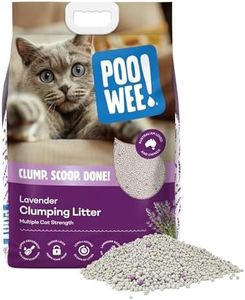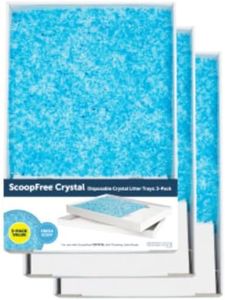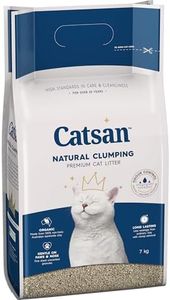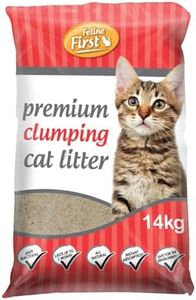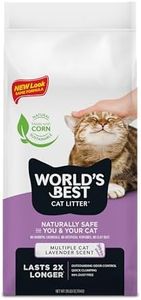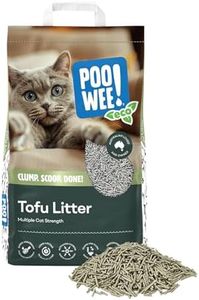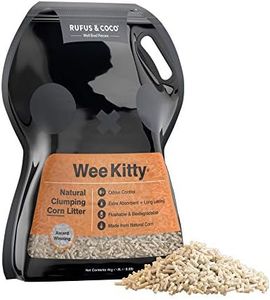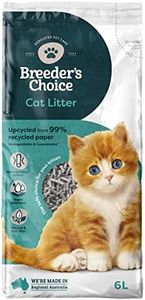We Use CookiesWe use cookies to enhance the security, performance,
functionality and for analytical and promotional activities. By continuing to browse this site you
are agreeing to our privacy policy
10 Best Kitty Litters
From leading brands and best sellers available on the web.Buying Guide for the Best Kitty Litters
Choosing the right kitty litter is a big part of keeping your cat and your home happy. Each cat and owner has different needs, so it's important to know what matters when picking a litter. The type and quality of litter can affect cleanliness, odor, ease of cleaning, and even your cat’s comfort. Understanding the key aspects of kitty litters will help you select the best option for your pet and home.Material TypeMaterial type refers to what the litter is made of, such as clay (clumping or non-clumping), silica gel crystals, recycled paper, corn, wheat, pine, or other natural fibers. This choice impacts absorbency, scent, dust levels, and environmental friendliness. Clumping clay is popular but heavy, while natural materials are lighter and more eco-friendly. If your cat has sensitive paws or you're concerned about dust, softer and dust-free materials like paper or corn may be better. Think about your priorities — whether odor control, low tracking, sustainability, or your cat’s health — before choosing.
Odor ControlOdor control describes how well the litter masks or absorbs unpleasant smells from urine or feces. Some litters add scented agents or baking soda to help cover smells, while others rely on their natural absorbency. High odor control is important if your litter box is in a common area or if you are sensitive to smells, but some cats dislike artificial scents. Decide if unscented or scented is best for you and your pet, and remember that even the best litter needs regular cleaning.
Clumping AbilityClumping ability is how well the litter sticks together when wet, forming solid lumps. Good clumping litter makes it easier to scoop out waste and keeps the rest of the box clean. There are non-clumping options, which absorb urine but don’t solidify, requiring more frequent changes. If you want easier cleaning and less frequent full-box changes, look for strong clumping; but some cats or kittens may eat or play with clumps, so in those cases, non-clumping may be safer.
Dust LevelDust level indicates how much small, airborne particles are released when filling or using the litter. Dusty litters can create mess and cause breathing issues for pets and people, especially those with allergies. Low-dust or dust-free options are best if you or your cat have sensitivities, or if the box is in a small or poorly-ventilated area. You can test for dustiness by pouring a small amount and watching for clouds of particles.
TrackingTracking refers to how much litter sticks to your cat’s paws and gets carried outside the box, leading to messes around your home. Fine-grain litters tend to track more, while larger or pellet-style litters track less but may be less comfortable for sensitive paws. If you want a cleaner floor, look for low-tracking or heavier particles, and if your cat is picky about texture, opt for a balance between comfort and cleanliness.
AbsorbencyAbsorbency is how well the litter soaks up moisture from urine and helps prevent pooling at the bottom of the box. Highly absorbent litters reduce odors and keep the box cleaner for longer. If you have multiple cats or don’t scoop daily, higher absorbency will help maintain freshness. For single-cat homes or very frequent cleaning, absorbency may be less of a concern, but it always helps to reduce mess.
Eco-FriendlinessEco-friendliness takes into account how the product affects the environment, including what it's made of and how it can be disposed. Natural and biodegradable litters like those made from corn, wheat, wood, or recycled paper decompose after use, while clay litters do not. If you want to minimize your environmental impact, look for biodegradable and sustainably sourced options, but make sure your cat is comfortable with the change.
